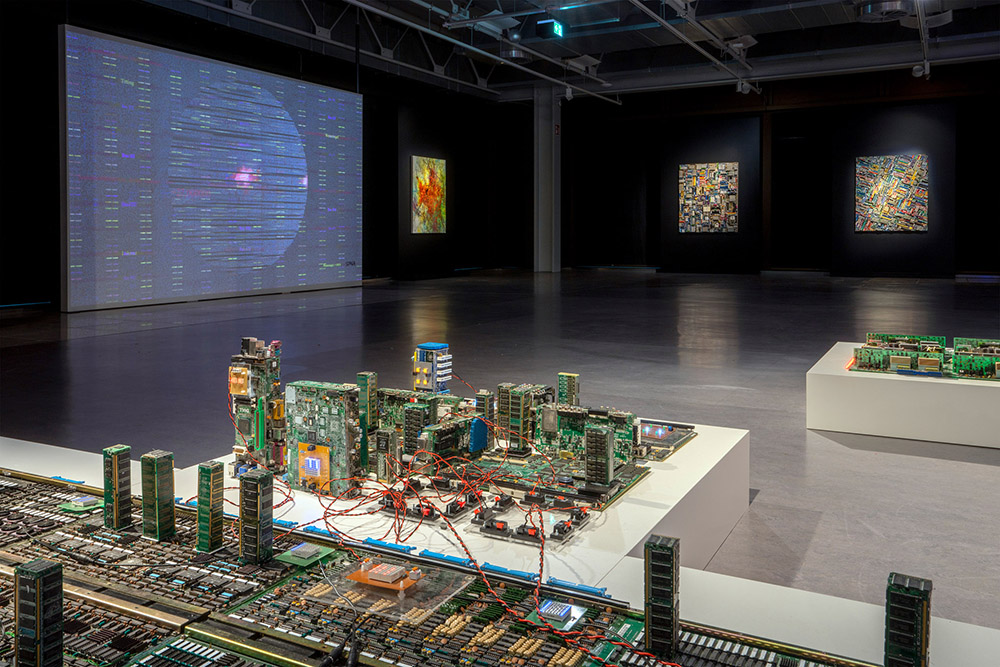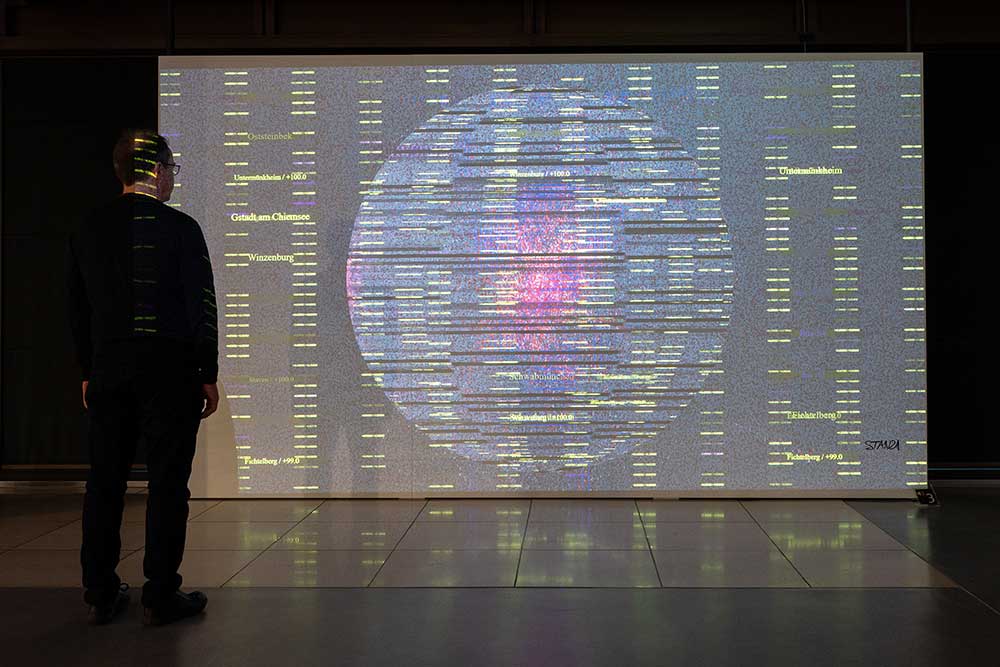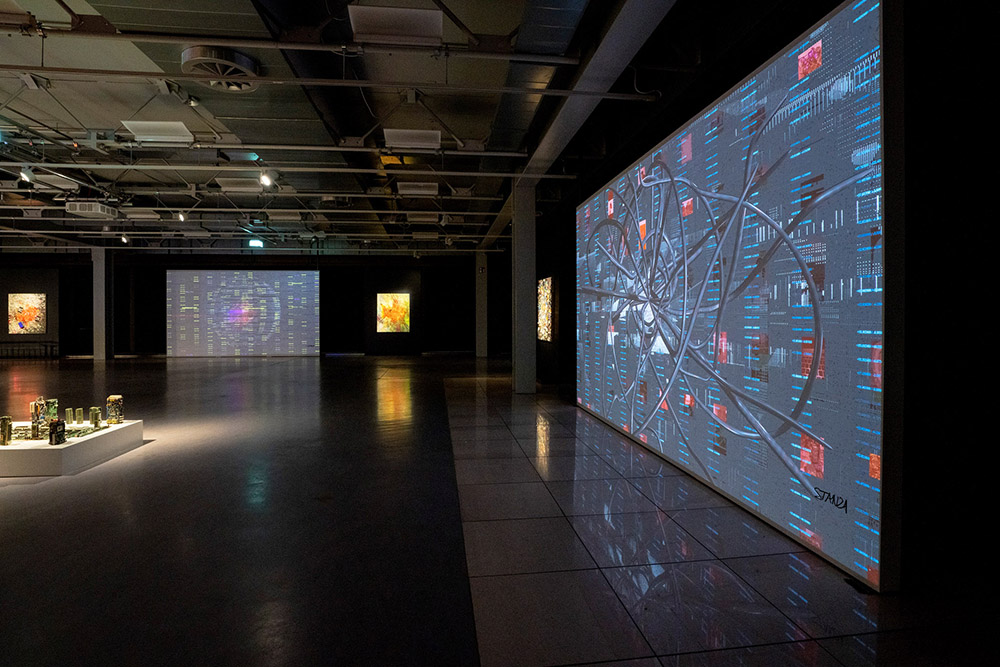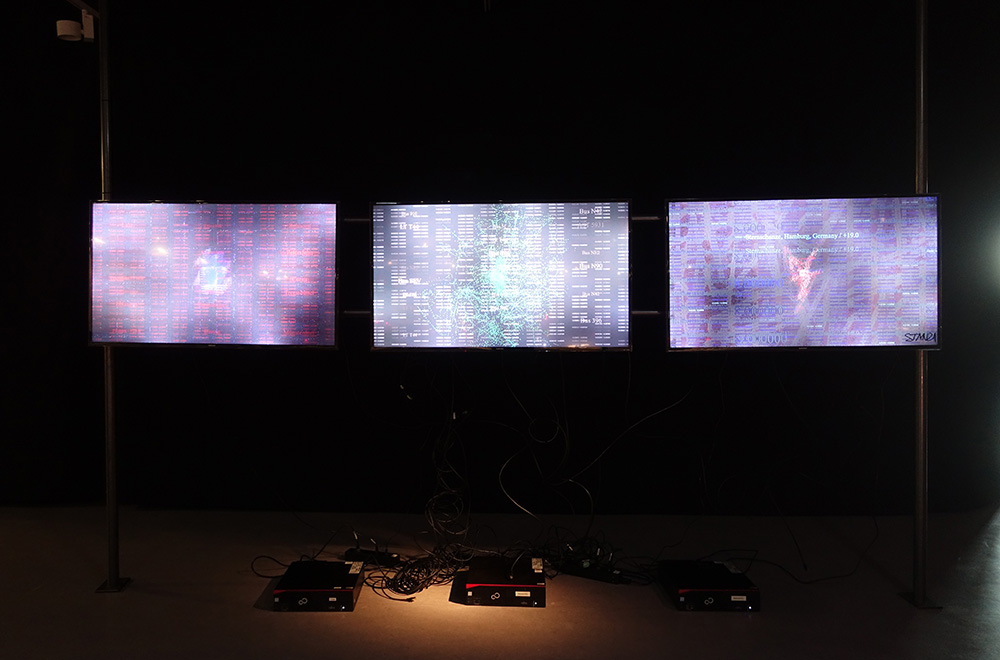|

Living Systems. 2023
Living Systems: Invisible Landscape: What happens when machines learn the behaviors of natural systems? The invisible landscapes address how new aesthetic experiences may result from combining data streams from across multiple cities and countries. This living system is represented as a dynamic generative artwork using pollution feeds, weather data, and transport data all controlled by unsupervised machine learning (ML) systems. The neural network creates patterns inside patterns of data to reform the invisible across the whole of the country.
We can now re-imagine the data from the whole country as a fluid living system that is presented to the audience artistically so that they can witness and experience this idea that they are participating in this bigger picture; at all times. This re-affirms a new social agency and directs us toward the virtual world that is now becoming a collaboratively engaged real-time social space. The artwork created becomes a speculative scenario for the future of the data landscape. As we move towards the age of singularity to what degree are we designing systems of control and framing that ethically; especially in light of the ever-growing complexity of AI and pattern recognition. These 'invisible landscapes' use these data to pose questions about how we are now connected to the landscape via technology and how new algorithms will shape this landscape which poses a further question:- How will artificial intelligence affect the governance of landscape in the future?
Technology: A dynamic generative artwork using transport, weather, and pollution data in made using a newly created real-time STANZA.API with unsupervised machine learning (ART) process built into neural networks using adaptive resonance ART. The Stanza.API and database are written in node.js. The neural net is ported from C to JS. Using Adaptive Resonance Theory 2- [ART 2] it creates unsupervised learning methods with no intervention. As a result, it is adaptive and creates new clusters of behaviour; they are always able to learn new input patterns without forgetting the past. Unsupervised learning algorithms learn patterns from untagged data. The machine is forced to build a concise representation of its world and then generate content. The paths create emergent neural networks of data from newly implemented weather pollution and transport feeds.
Needs an internet connection and is best shown on a series of 4k projectors. All projectors need a good pc and graphics cards.
Exhibitions
Heinz Nixdorf Museum. Paderborn. Germany 2023
Deutsches Museum. Nuremberg. Germany 2024
NOTE: Available for exhibition.

Transport times location buses trains taxis.
Pollution. Station name, GPS, Time, Carbon Monoxide, Nitrous Oxide, Humidity, Ozone, Sulphus dioxide, Temp, Wind.
Weather: Consists of country wide date including temperature, wind speed and direction, rain, snow, humidity and pressure









Stanza 2023.
|